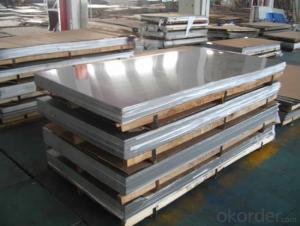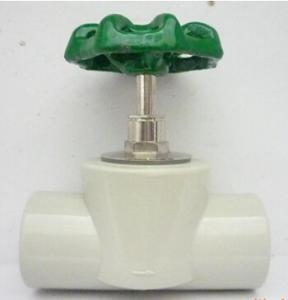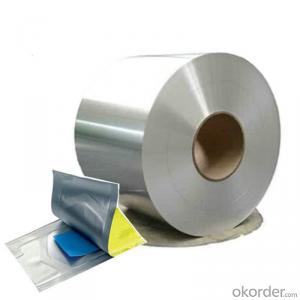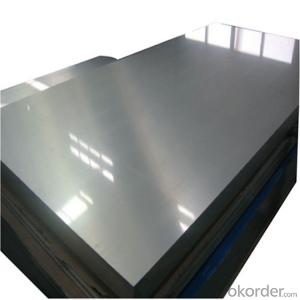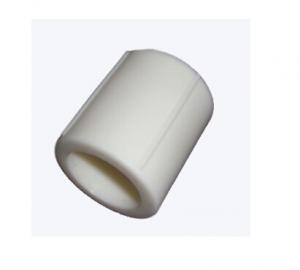Stainless Steel Food Jar
Stainless Steel Food Jar Related Searches
Best Paint For Stainless Steel Blanket Insulation For Steel Buildings Primer For Galvanized Steel Foam Filter For Stainless Steel H S Code For Stainless Steel Surface Grinding Wheels For Stainless Steel Surface Grinding Wheels For Hardened Steel Hole Saw For Stainless Steel Paint For Stainless Steel Stainless Steel For BbqHot Searches
Steel Mesh Panels For Sale Price For Stainless Steel Scrap Scrap Price For Stainless Steel Price For Stainless Steel Stainless Steel Tank For Sale Stainless Steel Sheets For Sale Cheap High Tea Sets For Sale Stainless Steel Tanks For Sale Stainless Steel For Sale High Density Fiberboard For Sale Solar Hot Water Collectors For Sale Scaffolding For Sale In Uae Scaffolding For Sale In Ireland Scaffolding For Sale In Houston Type Of Inverter For Solar Price Of Shipping Containers For Sale Types Of Inverter For Solar Stock Price For Aluminum Used Solar Inverter For Sale Steel Mesh Panels For SaleStainless Steel Food Jar Supplier & Manufacturer from China
Okorder.com is a professional Stainless Steel Food Jar supplier & manufacturer, offers integrated one-stop services including real-time quoting and online cargo tracking. We are funded by CNBM Group, a Fortune 500 enterprise and the largest Stainless Steel Food Jar firm in China.Hot Products
FAQ
- Yes, stainless steel sheets are suitable for chemical tanks. Stainless steel is known for its excellent resistance to corrosion, making it an ideal material for storing and transporting chemicals. It has high strength and durability, making it capable of withstanding harsh chemicals and extreme temperatures. Stainless steel also has a smooth, non-porous surface, which prevents the absorption of chemicals and facilitates easy cleaning. Additionally, stainless steel is non-reactive, meaning it does not react with most chemicals, ensuring the integrity of the stored substances. Overall, stainless steel sheets are a reliable and popular choice for chemical tanks due to their resistance to corrosion, strength, durability, and non-reactivity.
- Yes, stainless steel sheets are ideal for chemical processing due to their exceptional corrosion resistance, high strength, and durability. They can withstand exposure to various chemicals, acids, and alkalis without getting corroded or contaminated, making them an excellent choice for such applications.
- Yes, stainless steel sheets are highly recyclable. Stainless steel is a sustainable and environmentally friendly material that can be recycled indefinitely without losing its properties. The recycling process involves collecting and sorting stainless steel scraps, melting them down, and then reusing the material to create new stainless steel products, including sheets. Recycling stainless steel sheets not only helps conserve natural resources and reduce waste but also saves energy and reduces greenhouse gas emissions associated with the production of new stainless steel.
- To find the weight of stainless steel sheets, you can utilize the given formula: Weight (lbs) = Thickness (in) x Width (in) x Length (in) x Density (lbs/in³) The density of stainless steel varies between 0.283 and 0.305 lbs/in³, depending on the specific alloy utilized. Therefore, it is crucial to determine the precise density value for the grade of stainless steel you are working with. As an example, suppose we possess a stainless steel sheet that has a thickness of 0.125 inches, a width of 36 inches, and a length of 72 inches. Assuming the density of the stainless steel is 0.283 lbs/in³, the weight calculation would be as follows: Weight = 0.125 inches x 36 inches x 72 inches x 0.283 lbs/in³ = 91.368 pounds Hence, the weight of this stainless steel sheet would be approximately 91.368 pounds.
- There are several different types of stainless steel sheet finishes that are commonly used for sanitary applications. These finishes are designed to provide a smooth and clean surface that is resistant to corrosion and bacteria growth. 1. #4 Brushed Finish: This is one of the most common finishes for stainless steel sheets used in sanitary applications. It has a brushed appearance that creates a uniform and consistent texture. It is easy to clean and maintain, making it ideal for environments where hygiene is crucial. 2. #8 Mirror Finish: This finish has a highly reflective surface that resembles a mirror. It is smooth and shiny, making it visually appealing and easy to clean. However, it is important to note that this finish may show scratches and fingerprints more easily than other finishes. 3. 2B Finish: This finish is often used for stainless steel sheets that will be further processed, such as in fabrication or welding. It has a dull and smooth appearance, providing a good base for additional treatments or coatings. 4. Satin Finish: Also known as a No. 4 finish, the satin finish has a low luster and a smooth texture. It is commonly used in sanitary applications where a clean and aesthetically pleasing surface is desired. 5. Bead Blast Finish: This finish is achieved by blasting the stainless steel sheet with fine glass beads. It creates a uniform, non-reflective surface that is easy to clean and resistant to corrosion. The bead blast finish is often used in food processing plants and pharmaceutical facilities. 6. Electropolished Finish: This finish involves an electrochemical process that removes a thin layer of the stainless steel surface, leaving behind a smooth and shiny appearance. It provides a high level of cleanliness and resistance to corrosion, making it suitable for sanitary applications in the pharmaceutical and biotech industries. It is important to consider the specific requirements of the sanitary application when choosing the appropriate stainless steel sheet finish. Factors such as corrosion resistance, ease of cleaning, and aesthetic appearance should be taken into consideration to ensure the best possible outcome.
- Medical applications commonly utilize various types of stainless steel sheet finishes, each designed to possess specific qualities and characteristics necessary for such environments. A prevalent finish is the 2B finish, acquired through a cold-rolling process, which yields a smooth, reflective surface. This finish is frequently employed in medical instruments and equipment due to its ease of cleaning and high resistance to corrosion. Additionally, the No. 4 finish, also referred to as a satin finish, is widely used in medical cabinets and surfaces. This finish showcases a brushed appearance and offers a favorable combination of aesthetics and functionality. It boasts easy cleaning capabilities and reliable corrosion resistance. For more specialized applications, options like the No. 8 mirror finish are available. This finish exhibits a highly reflective surface and often finds application in surgical instruments and other high-end medical equipment. It not only presents a visually appealing surface but also demonstrates excellent corrosion resistance. Furthermore, alternative finishes, such as the bead blast finish, contribute to the medical equipment industry. This finish imparts a matte surface with a textured appearance, ideal for medical equipment requiring a non-reflective surface. Ultimately, the selection of a stainless steel sheet finish for medical applications depends on the specific requirements of the equipment or surface. Each finish possesses distinct advantages and characteristics, necessitating careful consideration to ensure optimal performance and longevity in a medical environment.
- To restore the shine on a stainless steel sheet, you can follow a few simple steps. First, make sure the surface is clean by wiping away any dirt or debris using a soft cloth or sponge and a mild detergent mixed with warm water. Rinse off the soap residue and dry the sheet thoroughly. Next, apply a small amount of stainless steel cleaner or polish to a clean, soft cloth. Gently rub the cleaner in a circular motion onto the stainless steel sheet, focusing on any areas with visible marks or dullness. Be sure to follow the manufacturer's instructions for the cleaner or polish you are using. After applying the cleaner, let it sit on the surface for a few minutes to allow it to work its magic. Then, using a clean portion of the cloth, buff the stainless steel sheet using circular motions until the shine starts to appear. Continue this process until you are satisfied with the results. If you don't have a specialized stainless steel cleaner or polish, you can also use some household items to restore the shine. For example, you can mix baking soda with water to form a paste and apply it to the sheet. Gently rub the paste onto the surface using a soft cloth and rinse it off thoroughly. Additionally, you can use vinegar or lemon juice to remove any stains or spots. Apply a small amount of vinegar or lemon juice to a cloth and rub it onto the stainless steel sheet, then rinse it off and dry it thoroughly. Remember to always test any cleaning method or product on a small, inconspicuous area of the stainless steel sheet before applying it to the entire surface. This will ensure that it doesn't cause any damage or discoloration.
- To avoid fingerprints and smudges on stainless steel sheets, several effective techniques can be employed: 1. Opt for a microfiber cloth: Employ a soft microfiber cloth to gently wipe the stainless steel surface. Microfiber is gentle and will not cause any scratches or streaks. Avoid using rough materials such as paper towels or abrasive sponges. 2. Utilize a stainless steel cleaner: Invest in a high-quality stainless steel cleaner that is specifically designed to eliminate fingerprints and smudges. Adhere to the cleaner's instructions and evenly apply it to the surface using a cloth or sponge. Remove any excess cleaner with a clean cloth. 3. Apply baby oil or mineral oil: Dab a small amount of baby oil or mineral oil onto a cloth and delicately rub it over the stainless steel surface. This will create a thin protective layer that aids in preventing fingerprints and smudges from adhering to the metal. 4. Avoid direct contact with bare hands: Fingerprints and smudges often result from direct contact with hands. Endeavor to handle stainless steel sheets with clean, dry hands or wear gloves if necessary. This will minimize the transfer of oils and residue onto the surface. 5. Establish a regular cleaning routine: Implement a consistent cleaning regimen for your stainless steel sheets. Wipe them down with a microfiber cloth or stainless steel cleaner at least once a week, or more frequently in high-traffic areas. This will hinder the accumulation of oils and grime, thereby reducing the likelihood of fingerprints and smudges. By adhering to these methods, you can effectively thwart the occurrence of fingerprints and smudges on stainless steel sheets, preserving their cleanliness and shine for an extended duration.


















